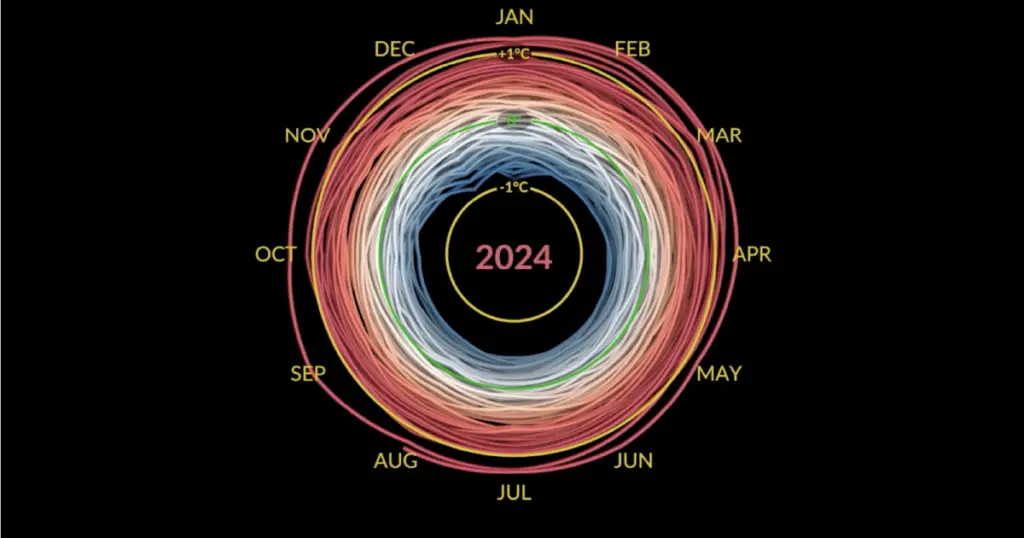This year, 2024, is expected to be the hottest year on record, surpassing the previous high for the year 2023says the European Union’s Copernicus Climate Change Service (C3S).
For the first time, average global temperatures will exceed 1.5°C (2.7°F) above pre-industrial levels from 1850 to 1900, the upper limit set by the Paris Agreement.
The agreement aimed for countries to work towards reducing global greenhouse gas emissions, aiming to limit the global average increase in surface temperature to 1.5°C above pre-industrial levels and aiming to keep it well below 2°C .
“This does not mean that the Paris Agreement has been breached, but it does mean that ambitious climate action is more urgent than ever,” said Samantha Burgess, deputy director of C3S.

Rising temperatures have already triggered extreme weather events around the world in 2024, including deadly floods in Nigeria and Europe, devastating wildfires in South America, early heat waves and catastrophic hurricanes in the United States.

JANUARY
The year got off to a fiery start as the world witnessed this The warmest January since records beganwith an average surface air temperature of 13.14˚C. This is 0.12°C above the previous temperature record for the warmest January, set in 2020.
January 2024 marked the eighth consecutive month that was the warmest on record for that month of the year – a streak that began in June 2023 and ended in June 2024.

FEBRUARY
In FebruaryThe Northern Hemisphere ended its warmest winter on record as ocean temperatures rose to unprecedented levels.
The average global sea surface temperature reached 21.09 °C (69.8 °F), surpassing the previous record of 20.98 °C (69.77 °F) set in August 2023.

While this increase is partly due to the El Nino climate pattern, which is causing unusually warm water in the eastern Pacific, its range is greater.
“What is even more surprising is that sea surface temperatures are at record levels in regions far from the center of El Niño, such as the tropical Atlantic and the Indian Ocean,” noted Richard Allan, a climate scientist at the University of Reading, highlighting the profound impacts by Rising greenhouse gas emissions contribute to global warming.
JUNE
As ocean temperatures rise, evaporation accelerates, transferring more heat from the oceans to the air. When storms move over warm oceans, they absorb more water vapor and heat.
This leads to stronger winds, heavier rainfall and greater flooding as the storms make landfall. This became apparent as the Atlantic entered hurricane season in June.
Hurricane Beryl, the first hurricane of the season, was the earliest Category 5 hurricane ever recorded in the Atlantic, according to the United Nations. World Meteorological Organization. Category 5 hurricanes cause catastrophic damage with winds of 157 mph (252 km/h) or greater.

Beryl formed in the Atlantic Ocean on June 28 and quickly intensified into a major hurricane. Between June 29 and the morning of June 30, wind speeds increased by 65 miles per hour, reaching Category 4 “extremely hazardous” status.





